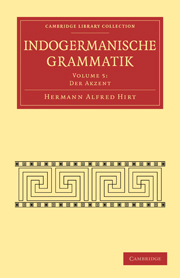Book contents
- Frontmatter
- Vorwort
- Contents
- Einleitung
- Erster Teil. Der Akzent der Einzelsprachen
- IV Kapitel. Das Griechische
- V Kapitel. Das Lateinische
- VI Kapitel. Das Keltische
- VII Kapitel. Das Germanische
- VIII Kapitel. Das Baltische
- IX Kapitel. Das Slawische
- X Kapitel. Die litu-slawischen Intonationen
- XI Kapitel. Der Hauptton im Litu-Slawischen im Vergleich zum Indogermanischen
- XII Kapitel. Das Armenische
- XIII Kapitel. Das Albanische
- XIV Kapitel. Das Indische
- XV Kapitel. Das Iranische
- Zweiter Teil. Der Akzent des Indogermanischen
- Autorenverzeichnis
- Sachregister
- Wörterverzeichnis
VI - Kapitel. Das Keltische
Published online by Cambridge University Press: 05 August 2011
- Frontmatter
- Vorwort
- Contents
- Einleitung
- Erster Teil. Der Akzent der Einzelsprachen
- IV Kapitel. Das Griechische
- V Kapitel. Das Lateinische
- VI Kapitel. Das Keltische
- VII Kapitel. Das Germanische
- VIII Kapitel. Das Baltische
- IX Kapitel. Das Slawische
- X Kapitel. Die litu-slawischen Intonationen
- XI Kapitel. Der Hauptton im Litu-Slawischen im Vergleich zum Indogermanischen
- XII Kapitel. Das Armenische
- XIII Kapitel. Das Albanische
- XIV Kapitel. Das Indische
- XV Kapitel. Das Iranische
- Zweiter Teil. Der Akzent des Indogermanischen
- Autorenverzeichnis
- Sachregister
- Wörterverzeichnis
Summary
Geschichtliches und Literaturübersicht. Eine zusammenfassende Darstellung der keltischen Betonung bietet jetzt H. Pedersen, Vergl. Gramm. d. keltischen Sprachen 1, 255, Göttingen 1909.
An sonstiger Literatur ist zu nennen:
W. Meyer-Lübke, Über die Betonung des Gallischen. S.-B. d. kais. Ak. d. W. in Wien, phil.-hist. Kl., 143, 2. Dazu die Anzeige von Thurneysen, Lbl. f. germ. u. rom. Phil. 1901, 136 ff.;
H. Zimmer, Über altir. Betonung und Verskunst. Kelt. Stud. VI, 1884;
R. Thurneysen, L'accentuation de l'ancien verbe irlandais. Rev. Celt. 6, 129 ff.;
R. Thurneysen, Zur ir. Akzent- und Verslehre. Rev. Celt. 6, 309 ff.;
H. Zimmer, Gurupūǰākaumudi (Weber-Festschrift 1896), S. 79—83;
H. Zimmer, Untersuchungen über den Satzakzent des Altirischen. S.-B. d. k. pr. Ak. d. Wiss. 1905, 19.
Die Quellen der keltischen Betonung. Unmittelbare Angaben über die keltische Betonung sind uns nicht überliefert. Wir sind daher auf Rückschlüsse angewiesen.
Einerseits besitzen wir die modernen Mundarten. Von diesen trägt das Irische im wesentlichen den Ton auf der ersten Silbe. So ist es auch im Altirischen gewesen. Da der Akzent stark exspiratorisch und energisch war, können wir den Sitz des Haupttones verhältnismäßig leicht erkennen, indem alle Silben, die ihn nicht trugen, reduziert wurden oder ausfielen. In der Verbindung mit einer Präposition trägt die erste Silbe des Verbs den Ton, z. B. do-móiniur ‘ich meine’, ad·rími ‘er zählt’. Vgl. Thurneysen 25. Dies entspricht, wie man sieht, der germanischen Verbalbetonung.
- Type
- Chapter
- Information
- Indogermanische Grammatik , pp. 82 - 88Publisher: Cambridge University PressPrint publication year: 2009First published in: 1929



